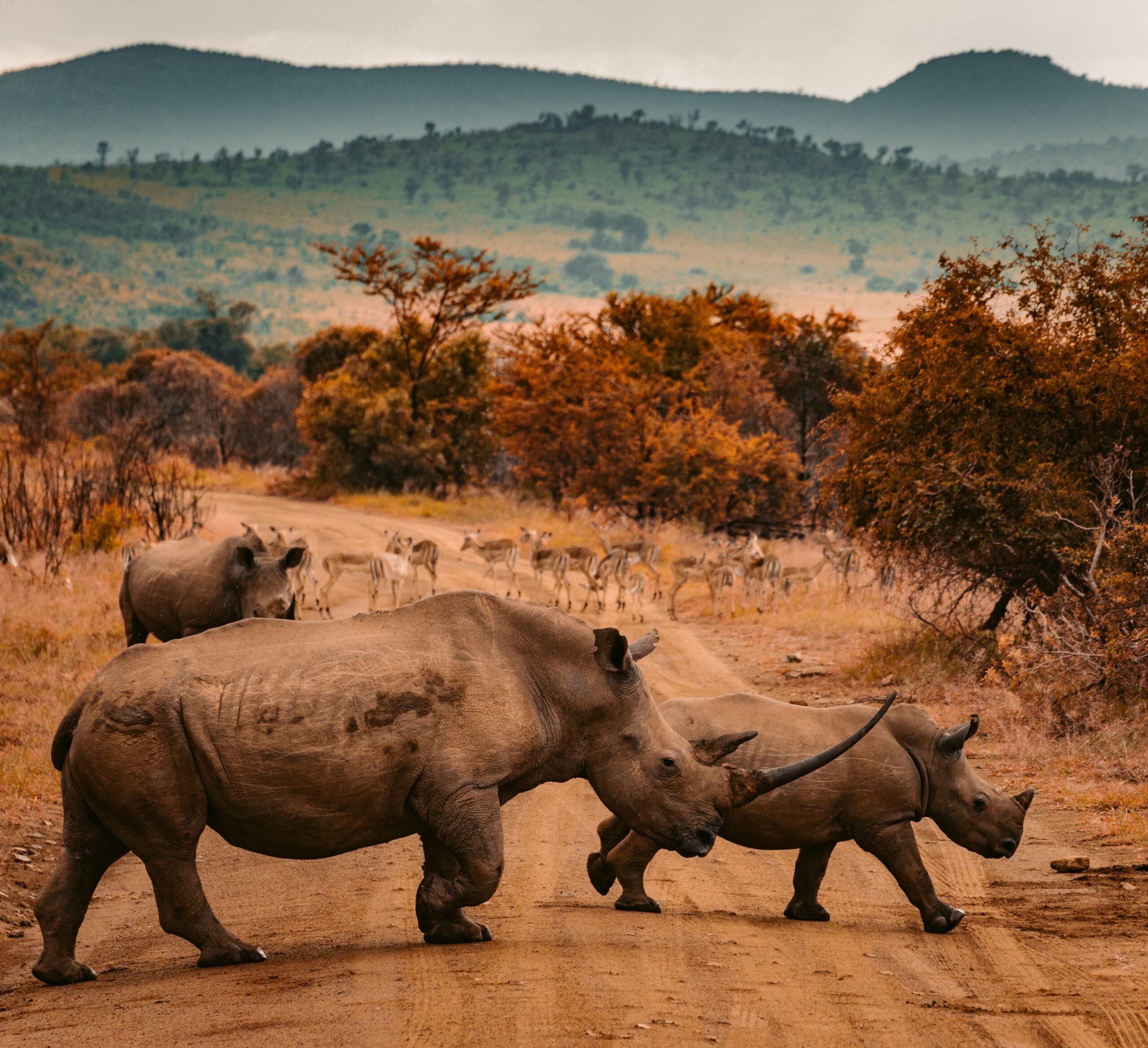“On average, one rhino is still poached every 16 hours”
Save the Rhino
This Friday, September 22nd, is World Rhino Day! First announced in 2010 by the World Wildlife Fund- South Africa, this celebration grew into an international success in just a short amount of time. This week just so happens to also be Climate Week NYC from September 17th to the 24th. This event has taken place each year since 2009 in New York City alongside the United Nations General Assembly. The main goal is to unite international leaders to illustrate the importance of global climate action. In celebration of these two meaningful and noteworthy events, let’s learn a bit about the last five living rhinoceros species and what we can do to help conserve and rehabilitate them.
According to the IUCN Red List, black rhinos are classified as critically endangered. While their current population trend is increasing, only 3,142 mature individuals remain. Black rhinos face countless threats, the most deadly is poaching. Due to their dual horns, they are seen as lucrative targets for the illegal trade in rhino horn. From 1970 to 1990, an estimated 96% of the black rhino population was destroyed due to intense poaching.
White rhinos are classified as near threatened with a decreasing population and roughly 10,080 mature individuals. White rhinos, the second-largest land mammals, are typically found in South Africa, Kenya, Namibia, and Zimbabwe. White rhinos face threats similar to black rhinos, including hunting and poaching, climate change and severe weather, and habitat loss. Due to their unaggressive nature, white rhinos are particularly vulnerable to poaching.
Also known as the “Indian Rhino”, the greater one-horned rhino was once found widespread all across the northern part of the Indian subcontinent. Due to hunting, this rhino population plummeted and was quite close to extinction by the beginning of the 20th century, with only 200 greater one-horned rhinos remaining. Today, this species of rhino is considered vulnerable, with over 2,000 mature individuals and an increasing population. The threats the greater one-horned rhinos face are attributed to population density and genetic diversity, habitat loss, and, of course, poaching.
Out of all five species of rhino, the Javan rhinos are the most threatened. They are classified as critically endangered, with a stable population trend and only 18 mature individuals. In the past, the Javan rhinos lived throughout Northeast India and Southeast Asia, but now they are found only in one protected area in the world. The threats to the Javan rhino include illegal wildlife trading, reduced genetic diversity, natural disasters and climate change, disease, and habitat degradation.
The Sumatran rhino is not only the smallest living rhino, they’re also the only Asian rhino with two horns. They are more closely related to the extinct woolly rhino than any of the other 4 rhino species alive today. The Sumatran rhinos live in small, fragmented, non-viable populations, making it difficult to breed with one another and leading to a declining population. According to the IUCN Red List, the Sumatran rhino is critically endangered, with a decreasing population trend and only 30 mature individuals. Just like the other rhino species, the Sumatran rhino is threatened by illegal wildlife trade and poaching, as well as habitat loss, lack of protected areas, and small population size and isolation.
Rhinos are incredibly vital to our world’s ecosystems and the natural order of our planet. Protecting them and conserving each of the remaining species is incredibly important. This year’s Climate Week theme is “We can. We will.”, reflecting the perseverance, principle, and promise of unity. We must take action against climate change, not just for our sake but for the sake of all living things. This Friday, consider donating to a trustworthy organization determined to help save and rehabilitate rhinos. If there’s a birthday or celebration coming up (it could even be yours!), WWF provides a symbolic rhinoceros adoption with a gift pack containing an adoption certificate, photograph, reusable bag, and plush toy!
Image: by Red Charlie via Unsplash.
